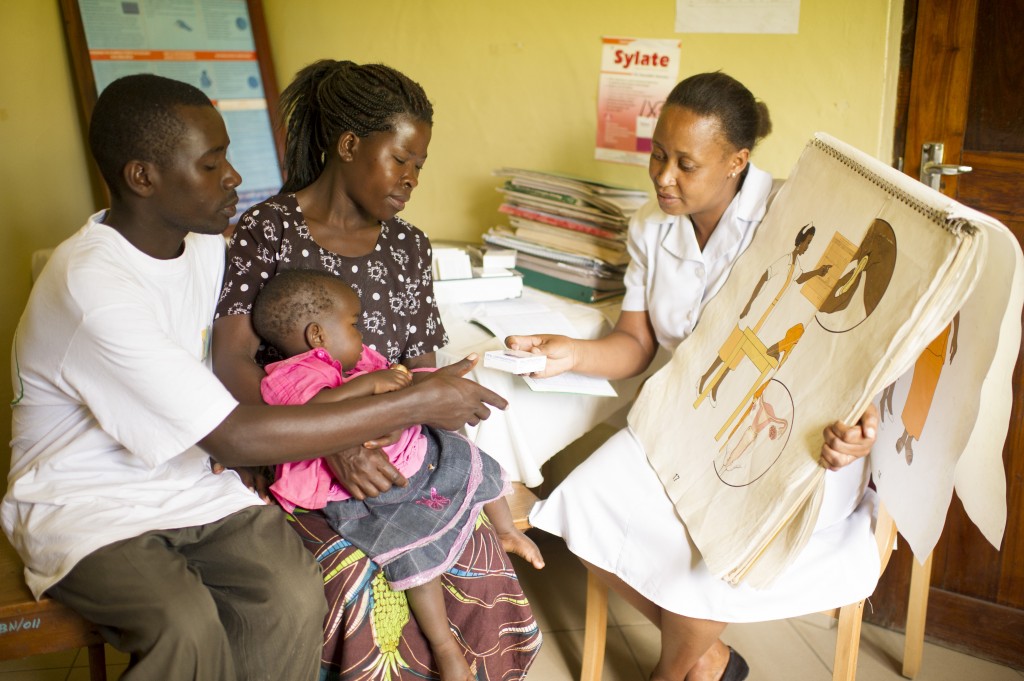Guest post by Lynn Bakamjian
Today, as family planning (FP) programs are receiving renewed attention and resources as a result of FP2020, several important issues have risen to the top of the investment agenda. These include increasing access to quality long-acting reversible contraceptive (LARC) methods; task-shifting FP information and services to lower level health workers to address provider shortages; and scaling- up approaches that extend services, such as postpartum FP , mobile services, and increased engagement of the private sector. As programs strive to make more contraceptive choices available to reach more than 200 million women with an unmet need for FP, there is one topic that receives little attention—how to expand access, availability, acceptability and quality of permanent methods (PMs) (voluntary female sterilization and vasectomy).
There are many positive attributes of PMs for individuals and couples who have attained their desired family size and want to limit future births. Both female sterilization and vasectomy are safe, highly effective, and relatively simple surgical procedures that can be performed under local anesthesia in an outpatient setting. PMs are non-hormonal and require a one-time procedure—attributes that appeal to many clients. There is a growing number of women and couples with the reproductive intention to limit[1]; and although not all will want or choose a PM, it is an option that should be offered within a balanced contraceptive method mix.
In preparation for an experts’ consultation on contraceptive choice in 2012 [2], EngenderHealth had the opportunity to query several representatives of donors and implementing agencies about whether efforts to expand voluntary sterilization were still relevant in today’s program environment. Overall, the answer to our question was affirmative; yet we heard several key challenges and theories as to why PMs are not being championed:
- There is a lack of overall knowledge among donors, policymakers, and reproductive health program managers about PMs, including the fact that female sterilization is the most widely used method in the world, with 223 million women using female sterilization (representing 19% of women of reproductive age) [3]. Contributing to this is a dearth of information in the recent programmatic literature on how to overcome barriers to use of PMs, particularly in developing countries. Most of the research on use dynamics and client perspectives dates back to the 1980s and 1990s [4].
- Although the vast majority of individuals who obtain PMs do so voluntarily, the legacy and stigma associated with coercive programs and sterilization abuse in a few places continues to mar the image of PMs. Negative associations are difficult to overcome, and many programs opt out due to concerns that it will increase political opposition to FP efforts.
- PMs are being eclipsed by initiatives to expand the availability of highly effective long-acting reversible methods, namely implants and the IUD. The recent volume guarantee by donors to secure implants at a low price has provided added impetus to invest in programming to ensure quality delivery of this method. Postpartum IUDs are experiencing a resurgence of interest and investment as well. Improving contraceptive security is focused on “products” and “commodities,” with little thought given to the equipment and supplies needed to ensure access to permanent methods [5].
- Finally, female sterilization and vasectomy are indeed more challenging to deliver because they are permanent and surgical and require a level of expertise and infrastructure to assure quality service delivery. Other key challenges, such as the human resource crisis, inadequate or outdated infrastructure and equipment, and poor transportation and working conditions related to clinical service delivery must be addressed as part of any effort to expand access to PMs, particularly in Sub-Saharan Africa. While some argue that investing in PMs can strengthen clinical and surgical care within the health system, others call for more evidence to understand the cost of investing in these methods—especially the up-front costs of establishing, expanding, and/or sustaining services.
These challenges speak to what can be done to improve the programming environment for PMs through a renewed advocacy and research agenda. We need more dialogue about PMs regarding their role in assuring contraceptive choice and how to overcome challenges to their access, quality, and use. Omitting PMs from strategic FP initiatives or investments to reduce unmet need will contribute to the neglect of these important method options for those who have reached their desired family size. The risk is that we will relegate permanent methods “off to the side” where they will not be mainstreamed within family planning programs and, where offered, may be done in a manner that compromises quality and choice. In effect, we will be affecting the contraceptive choice of women and men in the future – a choice that will not include permanent methods as an option.
[1] Van Lith, L.M., Yahner, M., and Bakamjian, L. 2013. Women’s growing desire to limit births in sub-Saharan Africa: meeting the challenge. Global Health: Science and Practice 1(1): p 97-107.
[2] The RESPOND Project. 2013. A fine balance: Contraceptive choice in the 21st century—an action agenda. Report of the September 2012 Bellagio conference. New York: EngenderHealth/The RESPOND Project.
[3] United Nations, Department of Economic and Social Affairs, Population Division (2011). World Contraceptive Use 2011.
[4] EngenderHealth. 2002. Contraceptive Sterilization: Global Issues and Trends. New York: EngenderHealth.
[5] Wickstrom, J. and Jacobstein, R. 2011. Contraceptive Security: Incomplete Without Long-Acting and Permanent Methods of Family Planning. Studies in Family Planning. 42(4): p. 291-298.



